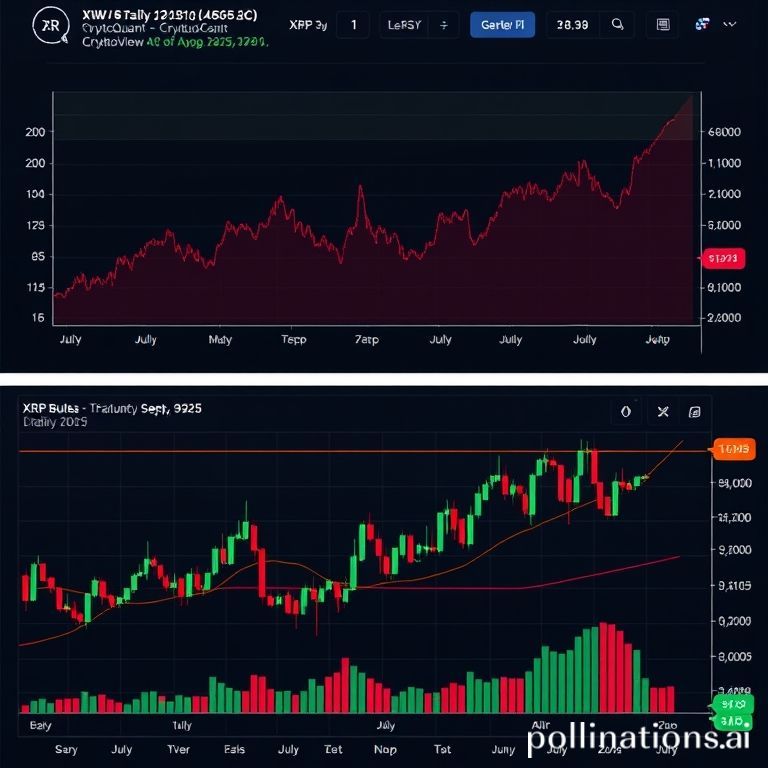
The burn mechanism, a foundational feature for many cryptocurrencies designed to control supply and potentially increase scarcity, is currently a subject of intense scrutiny within the XRP ecosystem. Recent on-chain data indicates a dramatic and concerning decline in XRP's daily burn rate, approaching near-zero levels. This significant shift raises critical questions about the network's activity, its long-term token dynamics, and how such changes might influence investor sentiment and price stability.
A Steep Decline in Burn Activity
Detailed on-chain metrics provided by CryptoQuant paint a clear picture of this alarming trend. Historically, XRP's burn activity was robust, routinely removing thousands of coins from circulation daily. However, this once-active process has almost entirely ceased in recent weeks, particularly throughout August and September. This collapse is particularly noteworthy as it reflects a substantial change in the contributing factors to XRP's overall token economics.
Looking back, December 2024 witnessed a temporary surge in XRP burns, exceeding 15,000 coins in a single day, coinciding with periods of heightened network engagement. This momentum carried over into the initial months of 2025, where burn levels maintained a steady yet moderate pace, typically ranging from 2,500 to 7,500 XRP daily. This period showcased a healthy, if not aggressive, rate of supply reduction. However, the trajectory shifted dramatically. By late August, the burn activity plummeted to unprecedented lows, consistently falling below 1,000 tokens per day. This depressed level persisted throughout September, with current figures hovering between a mere 400 to 750 XRP burned each day. When juxtaposed against XRP's colossal circulating supply, which exceeds 60 billion tokens, this current burn rate becomes almost negligible, raising concerns about its effectiveness in influencing scarcity.
Understanding XRP's Unique Burn Mechanism
It is crucial to understand that XRP's burn mechanism operates differently from many other popular cryptocurrencies, such as periodic burns seen in projects like Shiba Inu. XRP does not rely on large, scheduled token destruction events. Instead, it employs a constant, small-scale burn system. Each time a transaction is successfully processed on the XRP Ledger, a minuscule transaction fee, set at a minimum of 0.00001 XRP, is permanently destroyed. This inherent design means that every validated transfer contributes to the overall reduction of supply. Consequently, the efficacy and impact of this burn mechanism are directly proportional to the volume and frequency of transactions occurring on the XRP Ledger. For the burn to have a meaningful effect on supply dynamics, sustained and high transaction volumes are essential.
Therefore, the substantial decline in XRP burns is not merely an isolated phenomenon; it serves as a direct indicator of reduced on-chain activity. This points to lower levels of transactions on the XRP Ledger itself, especially when compared to the more active fourth quarter of 2024. In essence, the burn statistics function as a real-time mirror, reflecting the current state of network utilization and user engagement.
Price Resilience Amidst Declining Activity
Interestingly, despite the alarming collapse in burn rates, XRP's price action over the past few months has shown a surprising degree of resilience and a noticeable decoupling from the on-chain activity metrics. Far from mirroring the slowdown, XRP has managed to stage notable rallies, even achieving a new all-time high of $3.65 in July. This divergence presents a compelling case study, suggesting that external factors, market sentiment, or perhaps broader macroeconomic trends might be exerting a stronger influence on XRP's valuation than its immediate on-chain fundamentals.
However, at the time of writing, the altcoin has experienced a retracement of over 20% from its recent all-time high. Recent price movements, particularly over the past seven days, saw XRP briefly fall below the $3 mark after failing to sustain an earlier rally that attempted to push it between $3.15 and $3.18. Despite this downward pressure, XRP bulls demonstrated considerable strength, stepping in decisively around the $2.8 support level. This intervention successfully prevented further significant declines, underscoring a key psychological and technical support zone for the asset. At the time of this report, XRP is trading at $2.88, having managed a commendable 2.2% rebound over the past 24 hours, signaling a potential stabilization after its recent pullback.
The current situation presents a fascinating paradox for XRP. While its inherent supply-controlling mechanism appears to be dormant due to low network activity, its price has managed to defend crucial levels and even achieve significant gains. This suggests that the market may be pricing in other factors, such as speculative interest, ongoing legal developments, or its perceived utility in cross-border payments, rather than solely relying on its transactional burn rate as a primary value driver. Future movements will likely depend on a combination of renewed network activity, broader market trends, and continued investor confidence in its long-term prospects.
